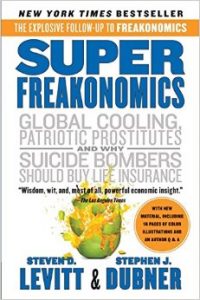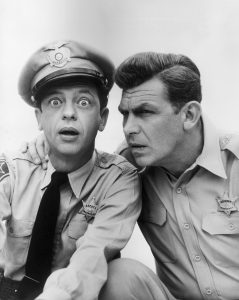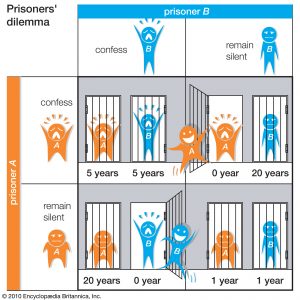SuperFreakonomics is a book intended to address topics without fear or favor, neither to predict ahead or argue statistics to defend indefensible causes. It recognizes the uniqueness in every person and yet admits the need for a baseline of averageness in order to reveal to us some startling percentages, such as why walking drunk is actually more dangerous than driving drunk! The purpose of this economic approach is a systematic means of describing how people make decisions, how the world is, not how we might wish for it to be.

Written by Steve Levitt and Stephan Dubner, “SuperFreakonomics” was published by HarperCollins Publishers, copyrighted 2009,
ISBN 9780061959936
www.freakonomics.com
This book delves into content that, as the authors contend, is atypical of the research many economists do. Through statistical data Steve Levitt and Stephan Dubner bring us into a world of statistics, percent odds, and how two seemingly different anomalies actually are related, such as how kicking a soccer ball into the center of a goal is like getting an injection against disease by using microbes of that disease! At first it seems there could not possibly be any connection, but as the authors journey us through the data we begin to see the light. Kicking the soccer ball in the center appears to be the most unlikely strategy a soccer player can make, even against common sense since that’s where the goalie is, but actually the goalie is more likely to leap left or right. In which case, against common sense, it is statistically more advantageous for the kick to be made towards the center of the net, much like giving our immune systems a bit of the disease to learn how to fight it off is actually advantageous, even though the notion of such an injection at first seemed suicidal.
SuperFreakonomics explores two separate anomalies in each of its five chapters, except one of the chapters which examines a collection of short studies on apathy and altruism. In that one, (which I found most interesting) the murder of Kitty Genovese is examined along with the bystanders, who for over 3o minutes did nothing to intervene. The authors allege many cultural variables were affecting American society back in the 1960s, even the justice system was more lenient than it is today. But they argue that the crime happened not because of the counter-culture or fewer days incarcerated for criminals, but because of the introduction of television. Not that people were watching the 7 o’clock news and didn’t hear Kitty’s screams, or that violent television shows lead to violent crimes. Actually, the authors allege that households that had a TV sooner rather than later resulted in a higher percentile ranking for criminal activity. While the authors admit they cannot pinpoint an exact reason for why television had a greater effect on the crime rate they hypothesize that it was the impression family-friendly programs painted about the supposed real-world…

circa 1965: American actor Don Knotts looks at the camera with a surprised expression, as Andy Griffith holds his hand on his shoulder, posing in character as Deputy Barney Fife and Sheriff Andy Taylor in a publicity still for the television series, ‘The Andy Griffith Show’. (Photo by Hulton Archive/Getty Images) click here to hear the theme song

The “Ultimatum” game. Player one can offer a sum of the total amount he is given to player 2, or none at all. Owing to a fear of rejection, money is usually given.
In The Andy Griffith Show, for example, the sheriff doesn’t carry a gun and his deputy is depicted as a buffoon. Could it be that those watching believed that that was actually the real world? But it still doesn’t explain why Kitty’s neighbors stood by and did nothing to help her. After all, some people are altruistic; although research has been done to show altruistic behavior can be motivated by incentives, such as grown children visiting a parent later in life in a nursing home if the expected inheritance is big enough; note children, not child, because the authors contend from their research that any indication of competition will certainly drive self-interest. And yet, Americans donate nearly $300 billion to charity a year to people they don’t even know. So, were none of Kitty’s neighbors altruistic or are we simply saying there was no incentive for any of them to help her? Looking at two well known studies, “The Ultimatum,” and “the Dictator” which test altruism through rejection, the authors point out that the in-depth studies around the world from Mongolia to Chicago show that people give. But then what if altruism is only present because of social scrutiny, when others are around to judge? Perhaps that played a part in why Kitty’s neighbors did nothing to aid her. By considering how a crowd of people reacts to a crisis versus a crowd set in their individual homes unable to see one another the results are staggering.
This book is certainly worth the time to read for arguments such as these. It compels us to ask questions about our humanity as well as the world around us. Are we really so apathetic to stay indoors when someone is screaming for help? But then why bend over for a nickel on the sidewalk? Is the nickel economically worth it? If a person’s reputation isn’t at stake to be judged then why drive is there to help? Perhaps, if anything, this book explores the human condition as much as it contrasts two anomalies. In the case of the Kitty Genovese story, the authors conclude with the recent research on the case that in fact exaggerations were published by the papers at the time. Aside from the fact that the crime happened near 3 AM, which is when most are asleep, Kitty’s scream did in fact awake her neighbors and someone shouted at the killer to leave her alone, but with poorly lit streets few could tell what was happening. And then, were there really over thirty neighbors? The findings show no. More like a dozen. Also did anyone call 9-1-1. Well, in 1963 that number didn’t exist. Calling the Police and Hospital went through an operator, which took several minutes.
So, a fair layout of the structure of each chapter is:
- Introduce two seemingly unrelated anomalies.
- Present research done by others to emphasize key points, but don’t quite connect the anomalies.
- Begin to tie the research to the anomalies.
- Conclude with how the two anomalies are related.
Of all the chapters in this book, what I found most compelling and memorable was the prisoner dilemma, a game that explores incentives, which is definitely a real-world concept, or at least one in my life. Incentives affect decisions, driving anything from economical (financial might be a better word in my case) to doing something good for someone each day (a bit of warm, fuzzy altruism). I also found it relevant considering I’m currently a teacher at a prison. From the illustration, there are two prisoners who can either confess to the crime, snitch on the other, or stay silent. If one rats the other out then he goes free while the other gets 20 years. If both cooperate, however, and stay silent then they both get just 1 year. While the latter seems like the win-win for both the human condition is fraught with self-interest and so 9 out of 10 times the experiment reveals people will act in their own interest. I found this relevant to the readings from Unit 3, which talked about imperialism and debt bombs. How developed nations, one’s that could exert more influence over others, acted in their own interests rather than the collaborative effort of all. And also the earlier chapter on Kitty Genovese and altruism, which reminded me of the Bottom Billion in Unit 4 and how so many people live off of just $1 a day.
other gets 20 years. If both cooperate, however, and stay silent then they both get just 1 year. While the latter seems like the win-win for both the human condition is fraught with self-interest and so 9 out of 10 times the experiment reveals people will act in their own interest. I found this relevant to the readings from Unit 3, which talked about imperialism and debt bombs. How developed nations, one’s that could exert more influence over others, acted in their own interests rather than the collaborative effort of all. And also the earlier chapter on Kitty Genovese and altruism, which reminded me of the Bottom Billion in Unit 4 and how so many people live off of just $1 a day.
As for my glowing recommendation for reading this book, if you’ve ever wondered about the most random things, how they relate to something else, and if that ever had an “economic” effect in terms how people think and make decisions then this is definitely worth reading… that or if you simply want to entertain yourself while waiting in the airport terminal because the airlines is delayed again. Why could television be so advantageous to reducing abortions in India? Why was automobile hailed as a hero to the march of civilization at the turn of the twentieth century, and yet now scorned? Ever wondered why many older buildings in NYC have deliberate brown stones at their base instead of white (think tons of horse manure piled up high and then washed away in the rains)! SuperFreakonomics is the sequel to Freakonomics, another great book, which began with such parallels as why drug dealers live at home with their mothers and also why school teachers cheat. There are many “heavy” books on the market, no doubt dealing with strong statistical data, but SuperFreakonomics takes a fun spin on economics that is enjoyable and entertaining, leaving you with a profound sense of something either you wanted to know or didn’t realize you were going to learn.